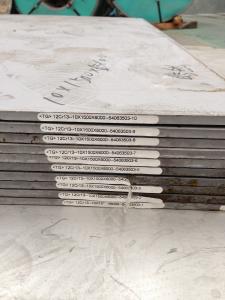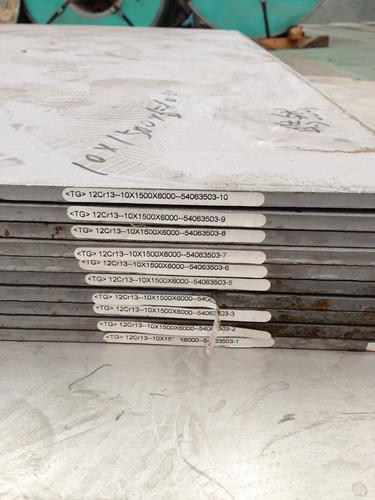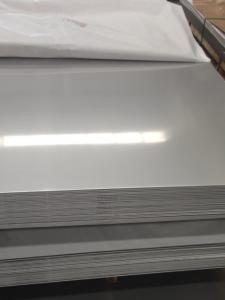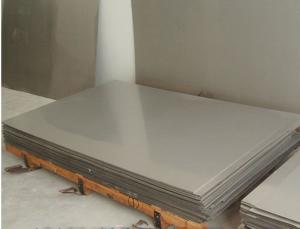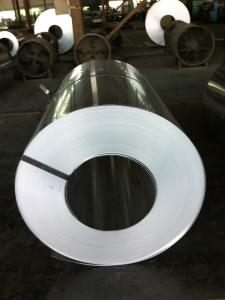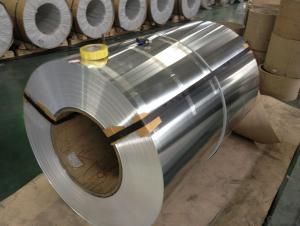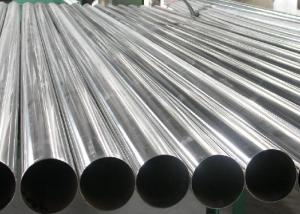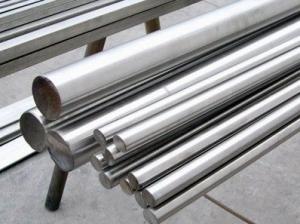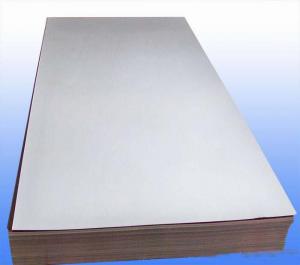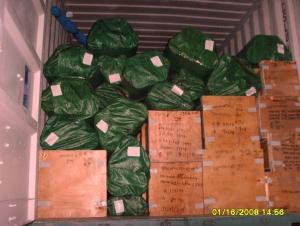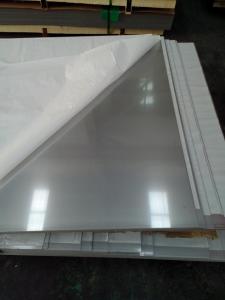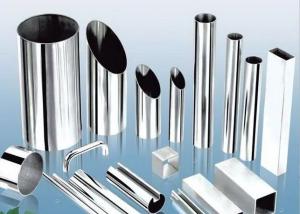Stainless Steel Cold Rolled Sheet With Best Price In Warehouse
- Loading Port:
- Shanghai
- Payment Terms:
- TT or LC
- Min Order Qty:
- 4 m.t.
- Supply Capability:
- 5000 m.t./month
OKorder Service Pledge
OKorder Financial Service
You Might Also Like
1.Structure of Product Description
We are one of the biggest manufactures towards the stainless steel sheet/coil/checkered sheet/mirror finished sheet, and we also have a best reputation in the field of decoration , construction, etc.
Cold rolled Stainless steel sheet, hot rolled stainless steel checkered sheet is widely used in the field of construction field and decoration field, etc. There are many different grades, such as:The detailed grade are as follows: 201, 202, 301, 304, 316, 410, 420, 430, etc.
2. Main features of the product
a. Competitive price
b. Frist-Class Service.
c. Very Best Price.
3. Image.

4. Product detailed sizes:
1000mm*2000mm, 1219mm*2438mm,1220mm*2440mm, 1250mm*2500mm,1500mm*3000mm, etc.
5. FAQ:
What is the quality standard?
---Usually our standard is GB3880-2006 or else.
What is the width range?
---It is from 1000mm to 2500mm, etc.
What is the length range?
---It is from 2000mm to 6000mm, etc.
What is the MOQ for your products yet?
---Normally it is around 3 tons/each size.
What is your mainly products?
---Normally they are stainless steel sheet, stainless steel coil, stainless steel checkered sheet, stainless steel mirror finished sheet, color coated stainless steel sheet, etc.
How many times have youever imported it from China before?
- Q: What is the composition of stainless steel sheets?
- Comprised mainly of iron, chromium, and other elements like nickel, manganese, and carbon, stainless steel sheets possess exceptional strength and durability. Iron, being the primary constituent, imparts resilience and sturdiness to these sheets, whereas chromium is incorporated to enhance their resistance against corrosion. By adding nickel, the sheets' ability to withstand high temperatures is bolstered, along with an improvement in their overall mechanical properties. Manganese is introduced to augment their malleability, while carbon contributes to elevating their hardness. The harmonious collaboration of these elements results in a versatile and remarkably dependable material that finds extensive application across diverse industries, including construction, automotive, and manufacturing.
- Q: Why do galvanized and stainless steel sheets buy more expensive than thin ones?
- First of all, galvanized sheet or stainless steel is made of thick hot-rolled billets by cold rolling, so the thickness is generally thinner, and the more processing times, the greater the cost. That's why the thinner is thicker than the expensive one. Once again, the plate has a negative range of thickness, not necessarily all feet thick, and when buying a flat, with suppliers to explain your negative range requirements.
- Q: Are stainless steel sheets suitable for elevator buttons?
- Yes, stainless steel sheets are suitable for elevator buttons. Stainless steel is a durable and corrosion-resistant material, making it an ideal choice for elevator buttons that are frequently touched and exposed to various environmental conditions. Additionally, stainless steel has a sleek and modern appearance, making it aesthetically pleasing for elevator buttons.
- Q: What are the different types of stainless steel sheet edges available?
- There are several different types of stainless steel sheet edges available, each offering its own unique advantages and characteristics. 1. Mill Edge: This is the standard edge finish produced during the manufacturing process. It has a straight, sharp edge with no additional treatment or finishing. Mill edge stainless steel sheets are commonly used in industrial applications where aesthetics are not a priority. 2. Slit Edge: Slit edge stainless steel sheets are created by cutting the sheet along its length, resulting in a slightly rounded edge. This type of edge is commonly used in applications where safety is a concern, as it reduces the risk of sharp edges causing injury. 3. Sheared Edge: Sheared edge stainless steel sheets are created by cutting the sheet along its width using shearing blades. This process produces a clean, straight edge without any additional finishing. Sheared edge sheets are often used in applications where precise dimensions are required. 4. Deburred Edge: Deburred edge stainless steel sheets have gone through a process to remove any sharp or rough edges, resulting in a smooth and safe edge finish. Deburring is often done using abrasive materials or specialized machinery. These sheets are commonly used in applications where safety and aesthetic appearance are both important. 5. Rolled Edge: Rolled edge stainless steel sheets have a curved or rounded edge, created by rolling the sheet during the manufacturing process. This edge type is commonly used in applications where a smoother, more finished appearance is desired. Rolled edge sheets are also easier to handle and less likely to cause injury during installation. Overall, the choice of stainless steel sheet edge depends on the specific requirements of the application, including safety concerns, aesthetic preferences, and dimensional accuracy.
- Q: How do stainless steel sheets resist corrosion?
- Stainless steel sheets resist corrosion due to their unique composition and protective oxide layer. Stainless steel is made up of iron, chromium, and other alloying elements such as nickel and molybdenum. The presence of chromium in stainless steel is crucial for its corrosion resistance. When exposed to oxygen, chromium forms a thin and invisible oxide layer on the surface of the stainless steel, known as the passive layer. This passive layer acts as a barrier that prevents oxygen and moisture from reaching the underlying metal, thus protecting it from corrosion. It is this layer that gives stainless steel its name, as it remains "stainless" or free from rust and corrosion. The chromium oxide layer is self-repairing and can reform if damaged or scratched, ensuring the continued protection of the stainless steel. This property allows stainless steel sheets to be used in various environments, including those with high humidity, exposure to chemicals, and even saltwater. Additionally, the alloying elements like nickel and molybdenum enhance the corrosion resistance of stainless steel. Nickel increases the stability and strength of the passive layer, while molybdenum improves resistance to pitting and crevice corrosion. Furthermore, stainless steel sheets can be further protected against corrosion through surface finishes, such as polishing or passivation. These processes remove any contaminants or impurities from the surface and promote the formation of a more robust and uniform passive layer. Overall, the combination of chromium, other alloying elements, and the protective oxide layer make stainless steel sheets highly resistant to corrosion, providing durability and longevity in various applications.
- Q: Can stainless steel sheets be used for elevator mirrors or panels?
- Stainless steel sheets are indeed suitable for elevator mirrors or panels. Elevator interiors often opt for stainless steel due to its enduring quality, stylish look, and ability to resist corrosion and scratches. By utilizing stainless steel sheets, elevator mirrors or panels achieve a contemporary and sophisticated appearance, while also ensuring effortless cleanliness and upkeep. Moreover, stainless steel is a versatile material that can be personalized with diverse finishes like polished, brushed, or textured, amplifying the allure of the elevator interior.
- Q: Can stainless steel sheets be formed into different shapes?
- Yes, stainless steel sheets can be formed into different shapes through processes such as bending, rolling, and stamping.
- Q: What are the different types of stainless steel sheet alloys available?
- There are several different types of stainless steel sheet alloys available, each offering unique properties and characteristics. Some of the most common stainless steel sheet alloys include: 1. Austenitic Stainless Steel: This type of stainless steel is the most widely used and versatile. It is non-magnetic and contains high levels of chromium and nickel, offering excellent corrosion resistance and good formability. Austenitic stainless steel alloys include 304 and 316 grades. 2. Ferritic Stainless Steel: Ferritic stainless steel is magnetic and contains high levels of chromium. It has good corrosion resistance and is typically less expensive than austenitic stainless steel. Common ferritic stainless steel alloys include 430 and 446 grades. 3. Martensitic Stainless Steel: Martensitic stainless steel is magnetic and contains high levels of carbon and chromium. It is known for its hardness and strength, making it suitable for applications requiring high wear resistance. Martensitic stainless steel alloys include 410 and 420 grades. 4. Duplex Stainless Steel: Duplex stainless steel is a combination of austenitic and ferritic stainless steels, offering a balance of both their properties. It has increased strength and corrosion resistance compared to austenitic stainless steel. Common duplex stainless steel alloys include 2205 and 2507 grades. 5. Precipitation Hardening Stainless Steel: Precipitation hardening stainless steel alloys are heat treatable and can achieve high strength levels. They contain elements such as copper, aluminum, or titanium, which form precipitates during heat treatment, resulting in increased strength. Common precipitation hardening stainless steel alloys include 17-4PH and 15-5PH grades. It is important to consider the specific requirements of your application when selecting a stainless steel sheet alloy, as each alloy has its own strengths and limitations.
- Q: What are the different types of brushed finishes available for stainless steel sheets?
- Stainless steel sheets offer a variety of brushed finishes, each with its own distinct appearance and texture. Some of the most commonly used finishes are as follows: 1. The #4 Brushed Finish: This is the go-to choice for many as it provides a smooth, directional grain achieved through the use of a grit belt or wheel. People often refer to this finish as a satin finish. 2. The #6 Brushed Finish: For a more refined appearance, the #6 finish is the way to go. It is achieved by using a higher grit abrasive belt or wheel, resulting in a smoother and more sophisticated look. This finish is often chosen for decorative purposes or when a higher level of elegance is desired. 3. The #8 Mirror Finish: If you're after a glossy, reflective appearance, the #8 finish is the perfect choice. It requires extensive polishing and buffing to achieve a nearly perfect reflective surface. This finish is highly favored in architectural and decorative applications where a polished and glamorous look is desired. 4. The Bead Blasted Finish: To achieve a matte, non-reflective surface, stainless steel sheets are blasted with glass beads under high pressure. This process creates a uniform and textured appearance, making it ideal for applications that require a low-maintenance finish. 5. The Linen Finish: For a visually appealing touch, the linen finish offers a pattern of parallel lines that resemble linen fabric. This finish is achieved by using abrasive belts or wheels with varying grit sizes, resulting in a textured finish. It is commonly used in architectural and interior design applications. These examples represent just a few of the many brushed finishes available for stainless steel sheets. The choice of finish will depend on the desired aesthetic, functionality, and specific application requirements.
- Q: Are stainless steel sheets good for industrial exhaust systems?
- Yes, stainless steel sheets are excellent for industrial exhaust systems. Stainless steel is known for its high resistance to corrosion, making it a highly durable and long-lasting material for exhaust systems. It can withstand high temperatures and extreme weather conditions, making it suitable for industrial environments. Stainless steel also has excellent strength and can handle the pressure and vibrations associated with exhaust systems. Additionally, stainless steel is easy to clean and maintain, which is important for keeping the exhaust system functioning efficiently. Overall, stainless steel sheets are a great choice for industrial exhaust systems due to their durability, corrosion resistance, and high temperature tolerance.
Send your message to us
Stainless Steel Cold Rolled Sheet With Best Price In Warehouse
- Loading Port:
- Shanghai
- Payment Terms:
- TT or LC
- Min Order Qty:
- 4 m.t.
- Supply Capability:
- 5000 m.t./month
OKorder Service Pledge
OKorder Financial Service
Similar products
Hot products
Hot Searches
Related keywords
